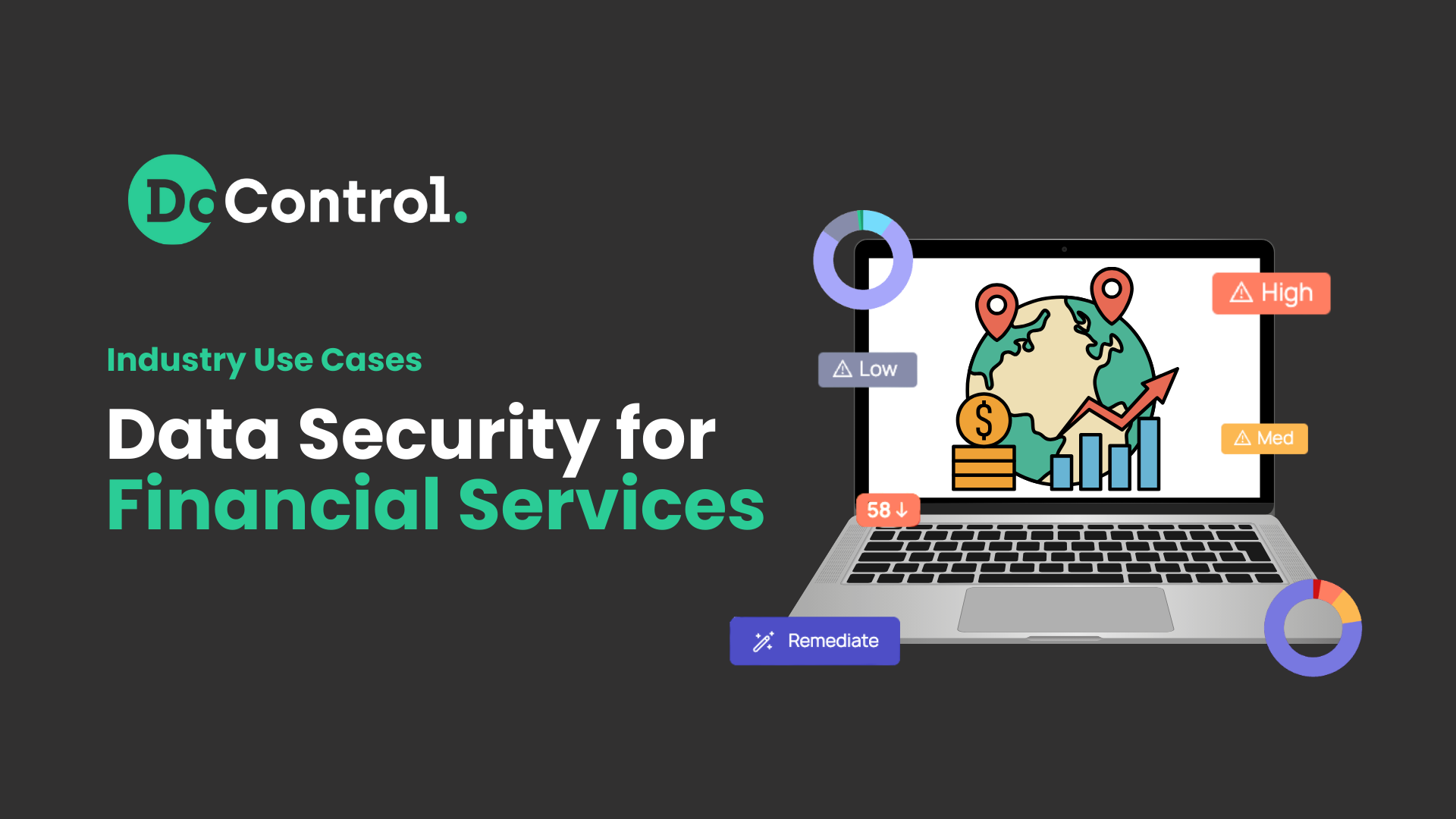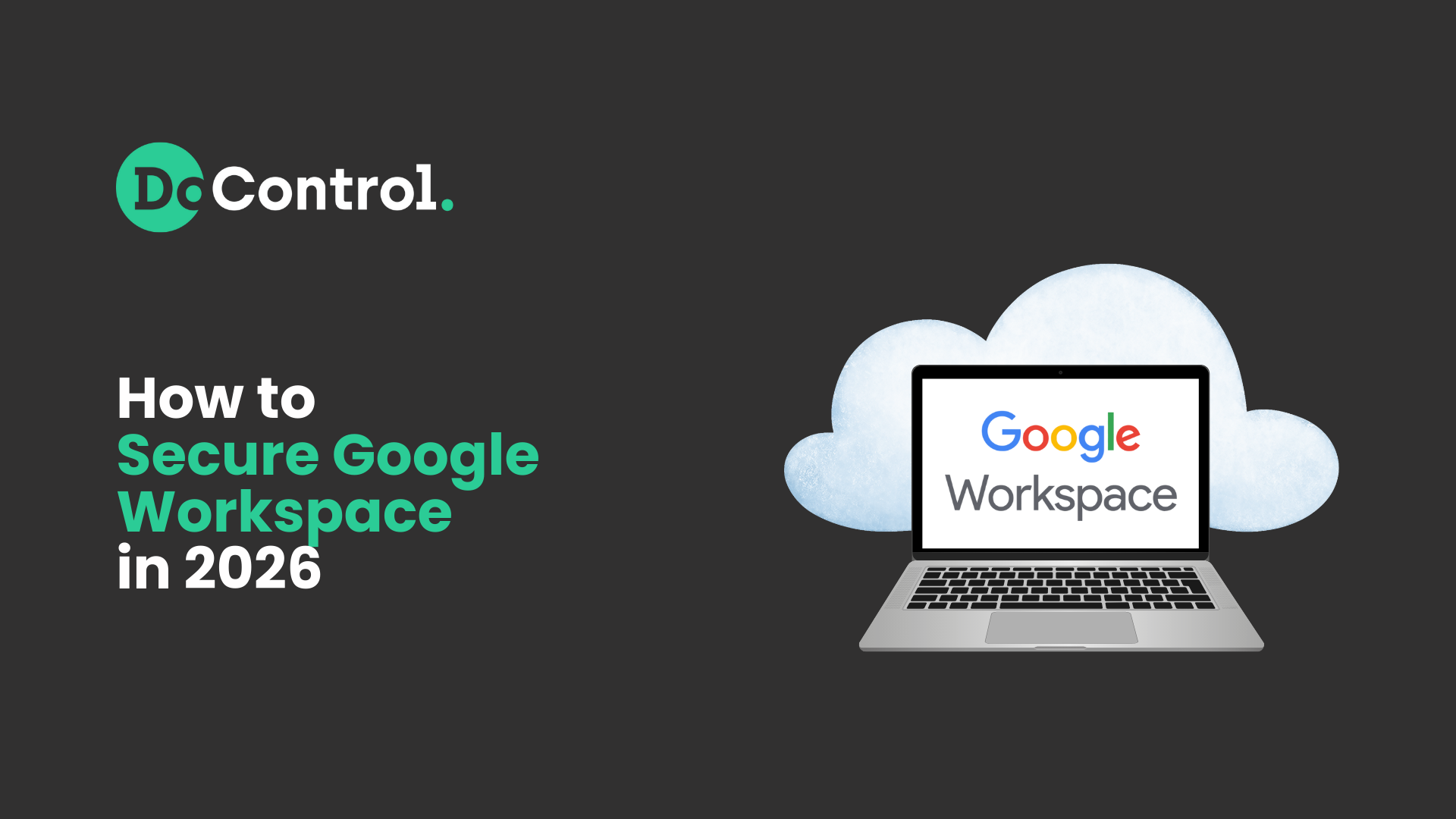
Data security is a growing concern among companies operating in the digital sphere, and most businesses have already implemented some type of data loss prevention technology to safeguard their assets.
Unfortunately, that doesn’t necessarily mean that a business is sufficiently protected from the dire consequences that come along with a data breach or leak.
The reason is simple: data loss prevention technology is not one-size-fits-all. And data loss prevention best practices won’t look exactly the same at every organization.
All data loss prevention solutions have the same goal: stopping businesses from losing control over who is viewing and accessing your organization’s critical data.
But the reality is that threats to your data are diverse, with numerous factors at play, including insider risk, bad actors with varying attack strategies, and more.
Organizations need to be sure that their data loss prevention solution is relevant for their specific needs. Solutions must be the correct fit for:
- The type of threat actor targeting a business
- The location of the data within an organization’s infrastructure
- The type of the data held by the company
If your data loss prevention strategy isn’t specifically geared towards these points, it can’t effectively protect your assets from threats.
As part of your company’s data loss prevention best practices, you need to ensure that your solution is correctly aligned with your organization’s risk factors and vulnerabilities.
Let’s break down the main risks for data loss, and how to find the right data loss prevention solution for your company’s unique needs.
3 Human Threats
There are three types of people-driven threats your DLP solution should cover.
1. Outsider Threat
When we think about data loss prevention, we probably start off by imagining an external bad actor who is attempting to obtain your assets via a cyber attack.
For defeating this classic cyberattacker, it’s critical for companies to have data loss prevention technology that can:
- Control access: Protects against password spray or brute force attacks, by providing MFA, strong password, and other access stringencies.
- Manage misconfigurations: Provides proactive solutions to “close doors” into your system that have been mistakenly left open by misconfigurations.
- Enforces Zero Trust architecture and PoLP (principle of least privilege). With Zero Trust and PoLP in place, a bad actor who manages to gain entry into your system will be limited in what they can do.
2. Malicious Insider
People who work at your company and have access to your organization's data can pose a serious risk to your data security.
An employee could access your internal assets, then copy, download, and sell them to the highest bidder - while your company is none the wiser.
This type of threat is significantly more difficult to mitigate than that of external actors, because the insider enjoys legitimate access permissions.
To combat malicious insiders, your DLP solution should:
- Take business context into account. For example, the solution should understand whether a user in a specific role at your company typically shares or downloads sensitive data.
- Recognize behavior anomalies. If a user is suddenly accessing or using data in an abnormal pattern, this should be a red flag and your DLP tool should notify you.
- Take HR context into account. If a user is about to leave your company and is suddenly on a downloading or sharing spree, this should raise an alarm with your DLP solution.
3. Negligent Insider
Another threat to your data that originates from within your organization, this specific risk lies with employees who may accidentally make poor choices that lead to data exposure.
For example, employees may unnecessarily grant access to third-party apps or collaborators to view, share, and even edit sensitive data.
To lessen the threat from negligent insiders, your DLP technology should:
- Catch sharing errors as soon as they happen. This means you can stay on top of oversharing, before data is viewed, copied, or otherwise spreads.
- Involve the end user in the remediation process. By educating an employee on why a share was risky, this solution is creating a long-term solution to address the issue.
Location of data
The location of your data is a critical factor when choosing the right DLP solution to safeguard your business.
User devices
If a significant amount of your company data and assets are stored locally on user devices, such as employees’ laptops and mobile phones, you'll need to focus on an endpoint DLP.
An endpoint DLP is specifically geared to securing data on user devices. There are numerous comprehensive endpoint protection platforms that guard against insider and outsider threats.
Company network
For companies with much of their data stored within an internal system, a network DLP provides important protection.
Network DLPs operate under the principle that data is incredibly vulnerable in transit, and secure data while it travels throughout a company’s network.
Solutions in this category include advanced firewalls, intrusion prevention systems, and strong encryption protocols that work to combat unauthorized access.
Cloud (SaaS)
For businesses that use SaaS solutions as part of their daily workflows, a Cloud/SaaS-focused DLP is necessary to protect critical data stored in the cloud.
Data stored in the cloud is especially vulnerable, because SaaS solutions make access to said data easier than ever before. SaaS assets can be shared and copied at lightning speed - often without even the need to download!
Cloud-focused DLP solutions will provide access controls and continuous monitoring to detect and respond to suspicious activity.
It’s critical to note that for SaaS-based companies, your DLP technology must be able to analyze and respond to potential threats swiftly. A few seconds could make the difference for preventing a breach or leak before it happens.
Type of data
The type of data that your organization holds is crucial for determining the correct DLP solution to protect your assets.
Structured
Structured data is typically stored in databases, made up of tables with many fields. It’s likely to be organized in rows and columns, which are usually labeled.
DLP technologies specific to structured data include:
- Protection against SQL injection attacks that would compromise the content of the tables.
- Data lineage that can trace how the data flows from table to table in different systems, so if sensitive information is identified in one table, it can easily be identified in all the others that inherit from it.
- Field-level encryption that can protect sensitive information, such as credit card numbers or personal identification numbers, even if the database is compromised.
Unstructured
This type of data is not “organized” in the same way as structured data, with its column and row headings. To protect unstructured data, you’ll first need to classify it. This requires understanding of both the content and the context.
DLP solutions that incorporate Natural Language Processing (NLP) techniques can help protect your unstructured data. NLP leverages computational linguistics - rule-based modeling of human language - with statistical, machine learning, and deep learning models in order to “understand” the significance and meaning of data.
A DLP solution that uses NLP may be able to identify entities and extract other features from unstructured data, as well as understand context and sentiment. This means that it can understand when data is sensitive, even if it’s not within a specific structure or organized format.
Why Choosing the Right DLP Solution Matters
As we’ve covered here, there are numerous threats to your data which can come from external bad actors, an employee’s innocent mistake, or a nefarious act by an internal user.
That’s not to mention that the type of data you’re trying to safeguard may be structured or unstructured, and that the location where your data is stored can have an impact on the likelihood of it being accessed by various threat actors.
Even if you already have a DLP solution in place and engage in data loss prevention best practices, it’s paramount to check whether your strategy is the right fit for your organization's risk factors and the characteristics of your data. If you’re using a DLP tool that isn’t well-suited to the reality of your data, you likely aren’t as protected as you think.

.png)

